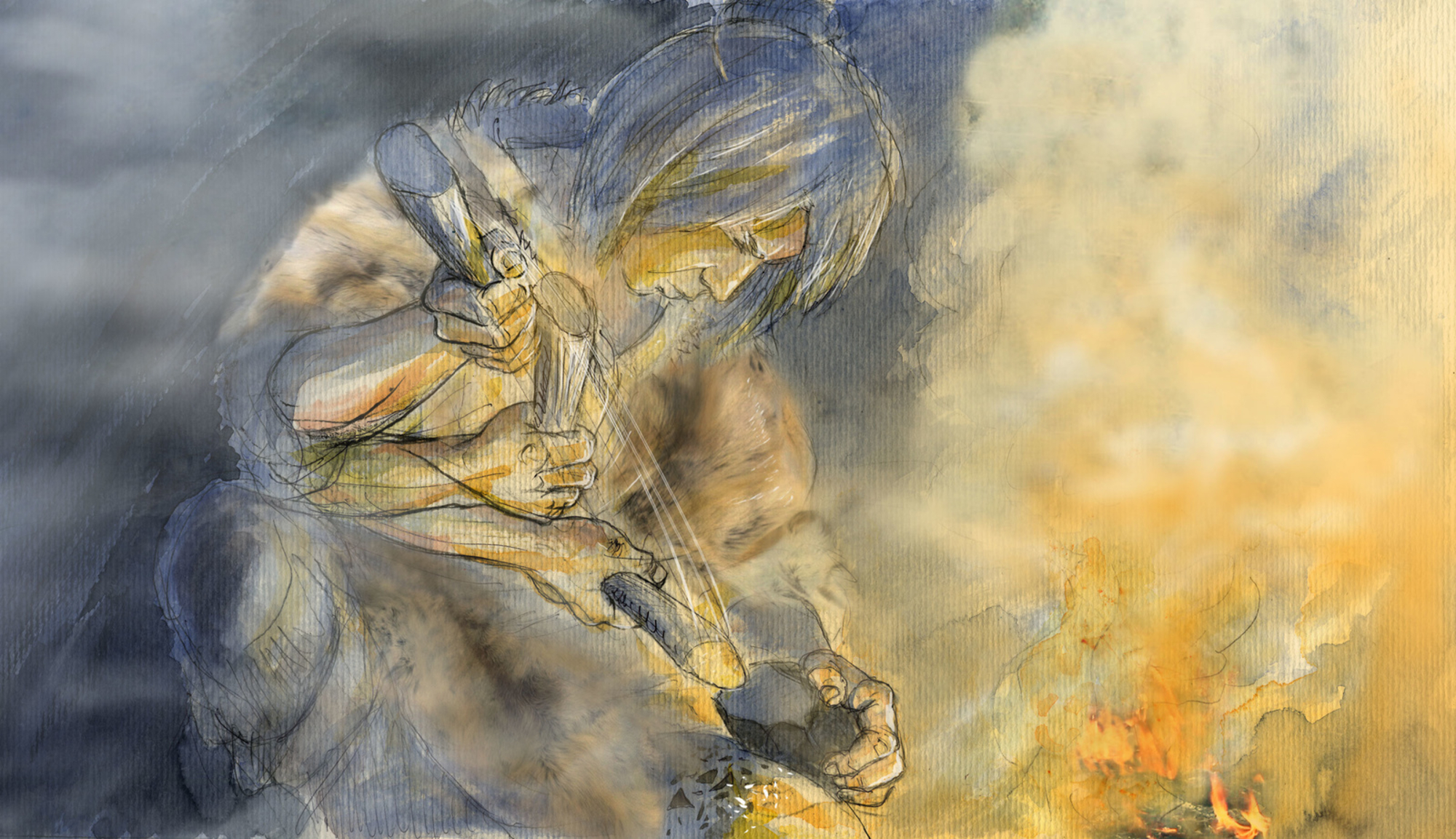
- Home
- The Magdalenians in their camps
- Flint knapping
- A prodigious flint deposit
Flint was much appreciated by prehistoric hunter-gatherers for its qualities making it suitable for shaping. Wherever this rock was present and accessible, the Palaeolithics used it for making stone instruments, as they did in the Paris Basin, where it is frequently found in geological layers from the Secondary and Tertiary Periods. The Magdalenians at Étiolles used large quantities of flint.
A rare quality of flint
The flint used by the Magdalenians at Étiolles came from lacustrine deposits going back to the end of the Tertiary Period, 35 million years ago, and was located less than 500 metres away, on the slope leading to the Sénart plateau. When formed by this type of deposit, it is common for flint to appear in the form of tablets. Given their large dimensions (up to one metre) and the homogenous nature of their texture, these tablets were particularly suited to the knapping of the long blades appreciated by the Magdalenians.
A deposit with only intermittent access
The proximity of this flint deposit was therefore one of the attractions of Étiolles at times of prehistory when vegetation was rare and intense gully erosion was taking place, exposing flint. At other times, populations were unaware of the existence of this deposit, as shown by the absence of flint of this type in diverse prehistoric occupations on the Sénart plateau not far away. It may well be that access to this exceptional deposit conferred on the Magdalenians who came to Étiolles some prestige in the eyes of other groups in the region.

